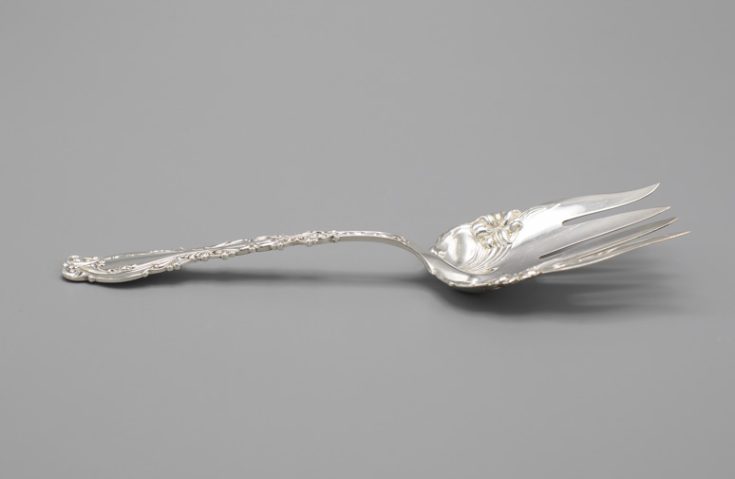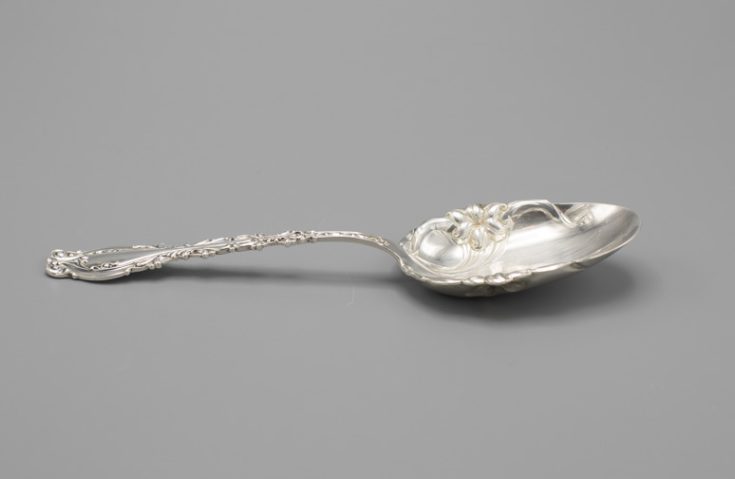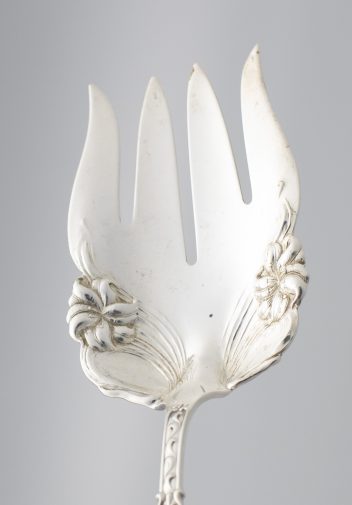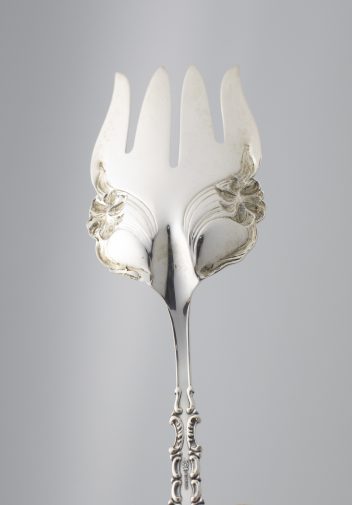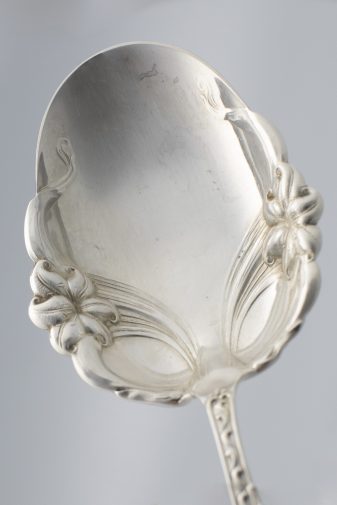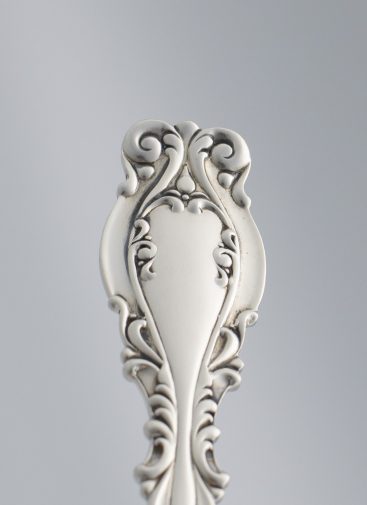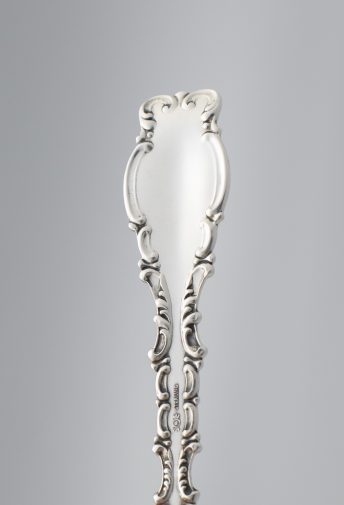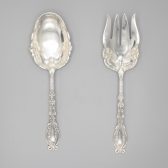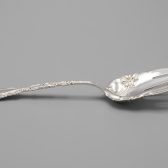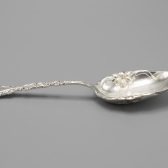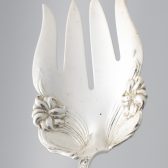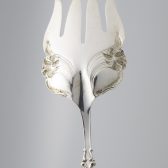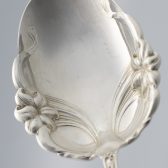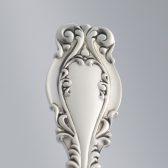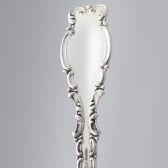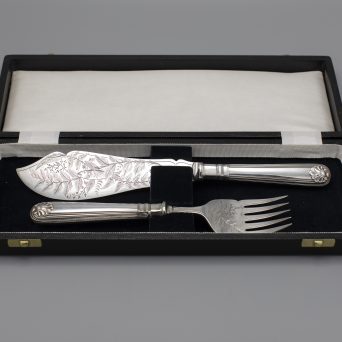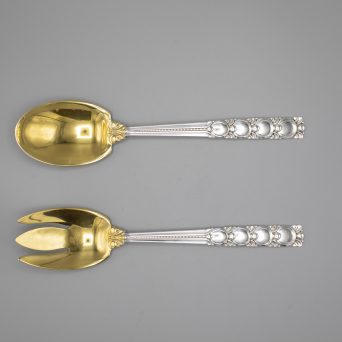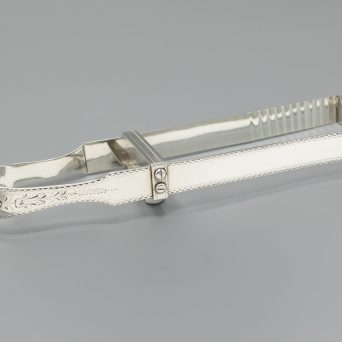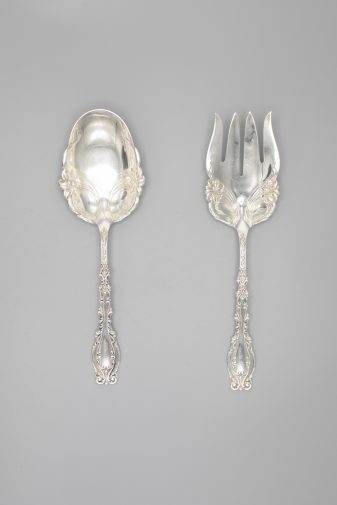
Art Nouveau American Sterling Silver Salad Servers
In the 1880s and the 1890s, a new style spread across Europe and the United States – Art Nouveau. Unlike the rigid Art Deco that eventually supplemented it, Art Nouveau emphasized flowing lines and curves as well as organic forms. They also featured stylized naturalism, with floral patterns, and animals such as dragonflies and snails. It has often been stated that Art Nouveau is a continuation of the Rococo style with its wavy lines and designs. Although silversmiths produced pieces in the Art Nouveau style, its impact was not as substantial in the silver market. The reason is that the methods that the silversmiths used with Art Nouveau pieces did not lend itself to mass production. As an example, some of the most elaborate pieces of Art Nouveau silver, took more than 90 hours to manufacture.
Our striking Art Nouveau American Sterling Silver Salad Serving Set in the ‘Josephine’ pattern is quite stunning in design. There is lovely workmanship on the handles which resonates throughout the entire pieces.
F. M. Whiting and Company was founded in 1878. In 1896, it became Frank M. Whiting & Company and continued manufacturing under that name until the firm was acquired by the Ellmore Silver Company circa 1940.
